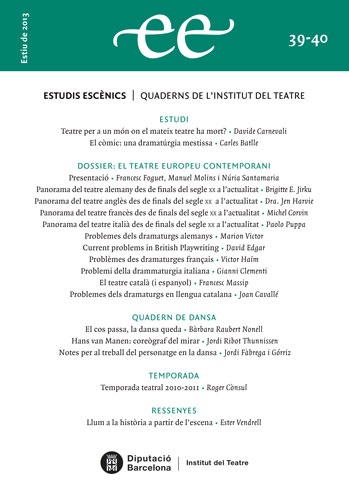Hans van Manen: coreògraf del mirar
Resum
This article stems from the paper “Hans van Manen: a guide to his poetry”, prepared as part of the Master’s Degree in Theatre Studies taken at the Autonomous University of Barcelona. Both texts share the goal of providing a presentation of the Dutch choreographer in Catalonia from a theoretical standpoint given that fact that his poetical contributions have barely been touched upon in the sphere of research beyond the Netherlands, despite his ballets being among the most popular around the globe for many decades.
German critic Horst Koegler has defined van Manen’s style as ‘nuclear dance’ ever since the release of Adagio Hammerklavier in 1973. Under a veil of minimalism at all levels, the build up of potency in his ballets patently makes them worthy of being branded in such a manner. But what are the poetical keys to them? This article suggests two. Firstly, the acknowledgment of the human existence of the performers in living out the abstract form of dance, which is heightened, among other aspects, by the choreography of visions; and secondly, the notion of eroticism under various guises as the choreographer’s conceptual, aesthetic driving force and, accordingly, as a potential perspective from which to approach his work and his methods.
Starting with a short contextualisation of Hans van Manen in the land of potential for dance that The Netherlands constituted during the fifties, and placing the figure on a poetical par with Georges Balanchine – his key point of reference – both aspects are presented as proposals for study to be addressed in greater depth in the future.














